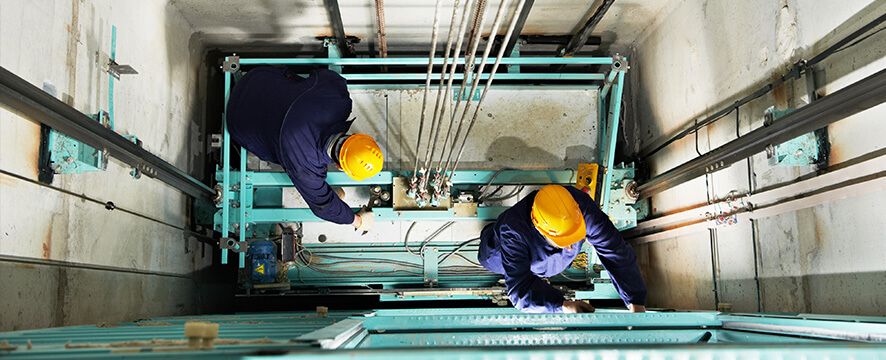Comprehensive Overview to Lift Equipments and Their Upkeep
Navigating the intricate globe of elevator systems and their upkeep is a task that demands precision and knowledge. From the numerous kinds of lift systems being used to the careful adherence to safety and security laws, the maintenance of these upright transport tools is a complex endeavor. As buildings rise greater and modern technology advances, the requirement for an extensive understanding of elevator systems comes to be increasingly critical. Join us as we unravel the intricacies of lift upkeep, discovering common problems, ideal techniques, and cutting-edge technologies that form the contemporary landscape of upright transportation.
Kinds Of Elevator Equipments
Lift systems been available in different kinds, each made to suit specific structure needs and customer requirements. The most usual types include hydraulic elevators, traction elevators, machine-room-less elevators, and vacuum elevators. Hydraulic elevators are perfect for low-rise structures and use a hydraulic piston to move the elevator auto. Grip lifts, on the other hand, are extra suited for high-rise structures and make use of steel ropes and weights to relocate the vehicle. Machine-room-less lifts are a space-saving alternative as they do not require a different maker area for the lift machinery. Vacuum cleaner elevators, an extra contemporary technology, use atmospheric pressure differentials to relocate the auto within a transparent tube.
Each kind of elevator system has its very own benefits and negative aspects, making it critical for structure owners and designers to carefully consider their specific needs before selecting one of the most ideal choice. Elements such as building elevation, area accessibility, energy performance, and budget plan restrictions all play a considerable role in establishing the very best elevator system for a particular structure.
Usual Maintenance Problems
Regular upkeep of lift systems is crucial to ensure smooth operation and prolong their life-span. Regardless of normal maintenance, elevator systems can still experience typical maintenance issues that require to be promptly dealt with to avoid interruptions in service. Normal examinations and positive maintenance can help recognize and settle these typical upkeep problems before they rise and affect the total efficiency of the lift system.
Security Regulations and Conformity
Complying with rigorous safety and security regulations and making sure compliance with industry criteria are vital for maintaining the functional stability of elevator systems. Lifts are subject to a thorough set of safety guidelines to protect travelers, upkeep workers, and the basic public. Regulatory bodies such as the Occupational Safety and Wellness Management (OSHA) in the United States and the European Lift Organization (ELA) in Europe establish standards that cover various facets of elevator layout, upkeep, setup, and procedure.
Compliance with these regulations is not only a lawful requirement however additionally a moral responsibility for structure owners and elevator upkeep firms. Failure to fulfill security criteria can result in fines, legal responsibilities, and, most significantly, threaten the safety and security of individuals utilizing the lift. Regular evaluations, upkeep checks, and adherence to safety protocols detailed in the laws are necessary to ensure the effective and risk-free operation of elevator systems. By prioritizing security guidelines and conformity, stakeholders can promote the trust of the public and reduce prospective dangers connected with lift usage.
Ideal Practices for Maintenance

One more essential best technique is to without delay resolve any type of unusual sounds or documented issues to prevent more damage. Executing a proactive strategy to maintenance can save time and cash over time by staying clear of expensive repair work or replacements. Structure owners need to likewise consider buying modernization upgrades to boost the effectiveness and safety of their elevator systems. By adhering to these finest practices, lift systems can operate efficiently and safely, supplying trustworthy vertical transport for residents.

Advanced Technologies for Efficiency
Carrying out cutting-edge modern technologies in elevator systems can significantly improve operational effectiveness and traveler experience. These systems permit guests to input their preferred floor prior to entering the lift, which after that guides them to the most reliable cars and truck.
Furthermore, the assimilation of smart sensing units and anticipating maintenance abilities has actually reinvented lift upkeep. These sensing units can detect prospective concerns before they rise, enabling positive upkeep interventions and reducing downtime. In addition, the use get more of energy-efficient parts and regenerative drives assists lower power consumption and operating expense in lift systems.
Furthermore, the application of cloud-based surveillance and remote diagnostics permits real-time tracking of elevator efficiency and prompt troubleshooting of any type of malfunctions. This aggressive approach not only enhances system integrity but also improves the overall customer experience by ensuring nonstop and smooth lift procedures.
Verdict
In conclusion, comprehending the different kinds of lift systems, typical upkeep concerns, safety and security regulations, best upkeep practices, and advanced modern technologies for efficiency is essential for guaranteeing the smooth operation of elevators. By adhering to safety policies and executing finest practices for upkeep, building owners can prolong the lifespan of their lift systems and ensure the safety and security of guests. It is essential to remain upgraded on the current improvements in elevator innovation to improve efficiency click and integrity.
The most usual types include hydraulic elevators, traction lifts, machine-room-less lifts, and vacuum elevators. Hydraulic lifts are excellent for low-rise structures and utilize a hydraulic piston to move the lift auto. Machine-room-less lifts are a space-saving option as they do not require a different maker area for the lift equipment. Regular evaluations and positive maintenance can assist recognize and settle these typical maintenance concerns before they escalate and influence the overall efficiency of the lift system.

Comments on “Comprehensive Overview to Lift Repair Companies Near Me for Efficient Lift Maintenance”